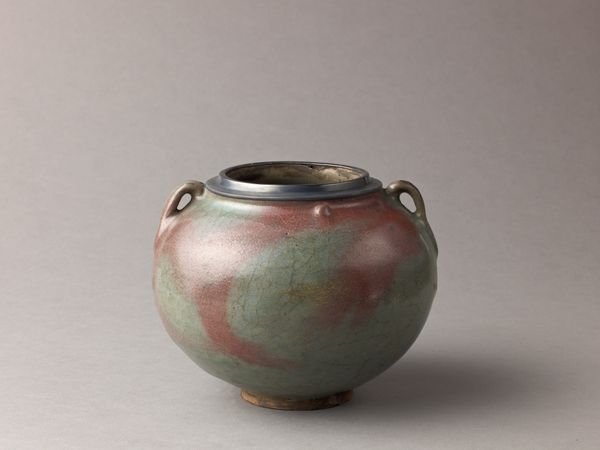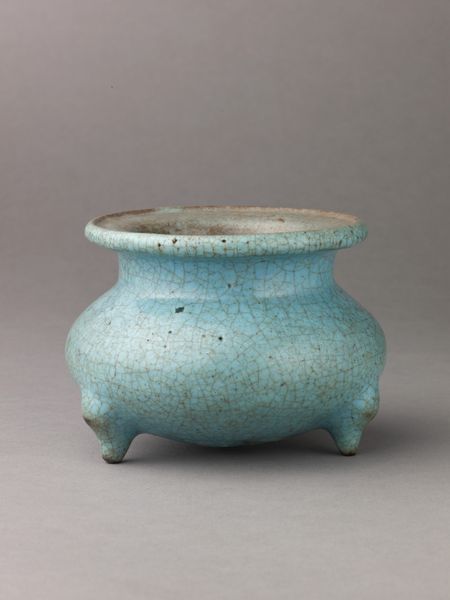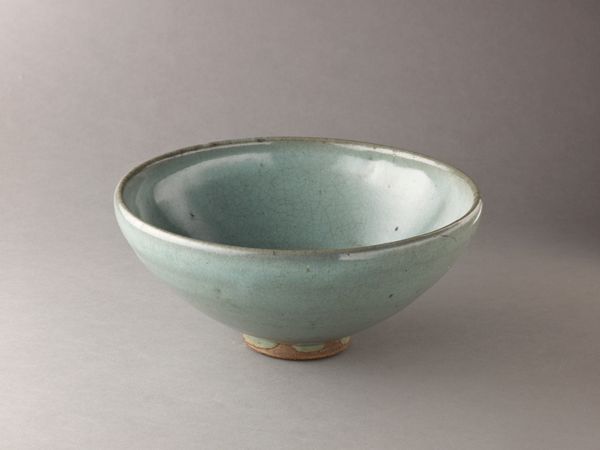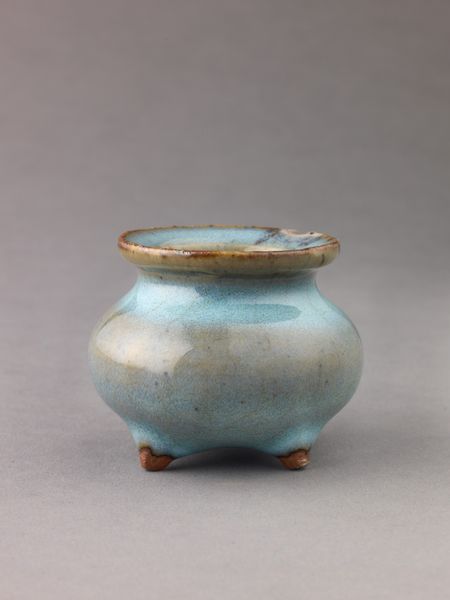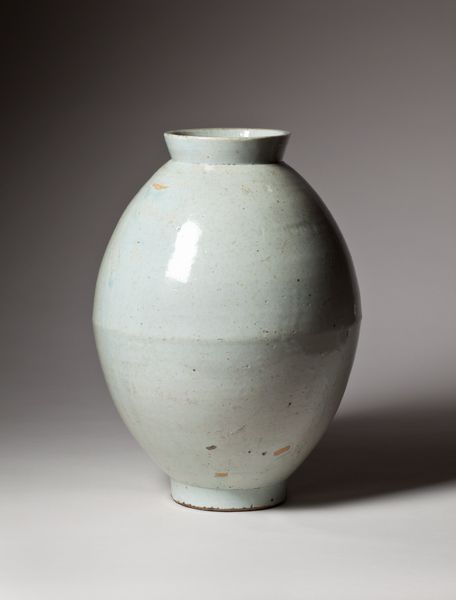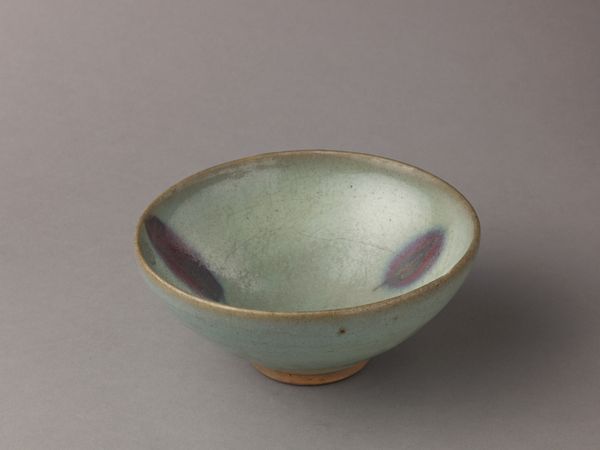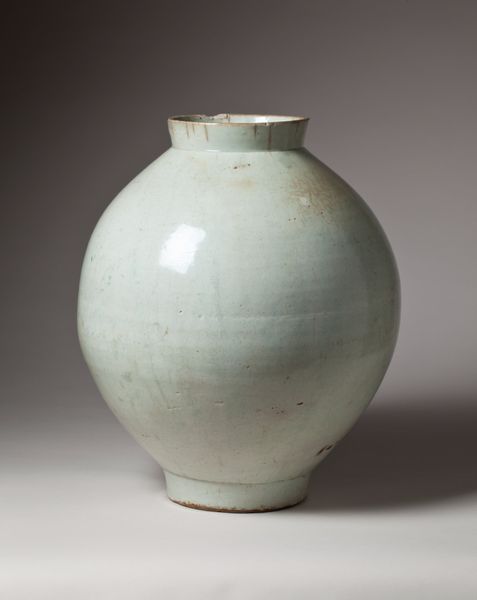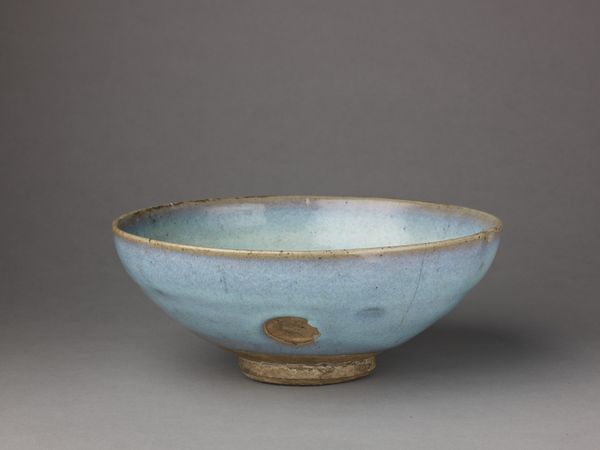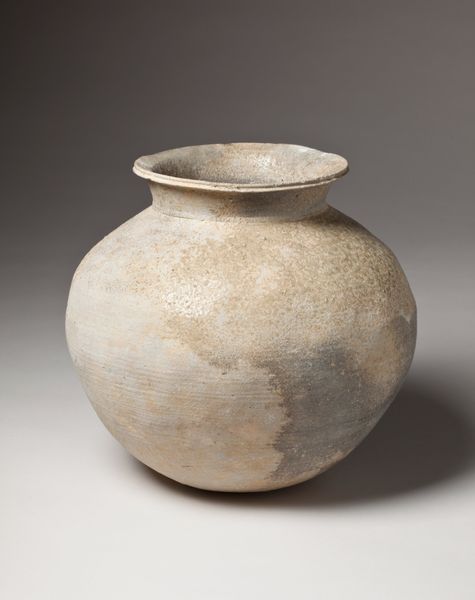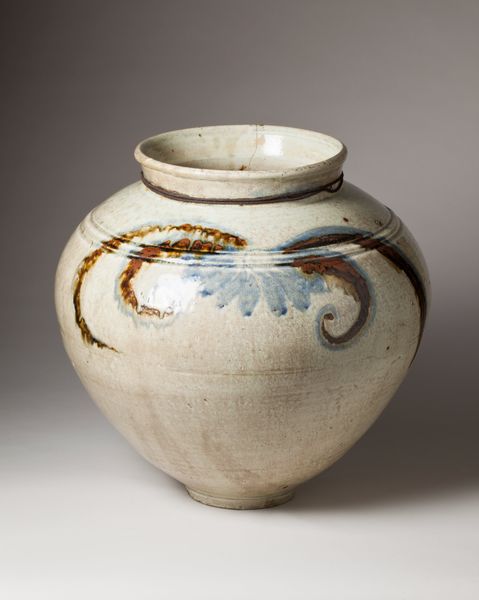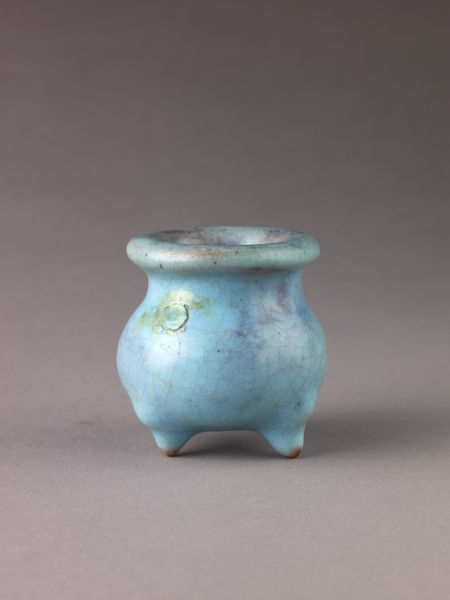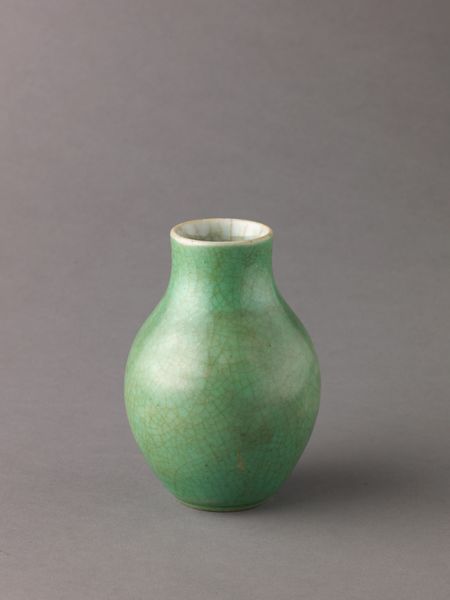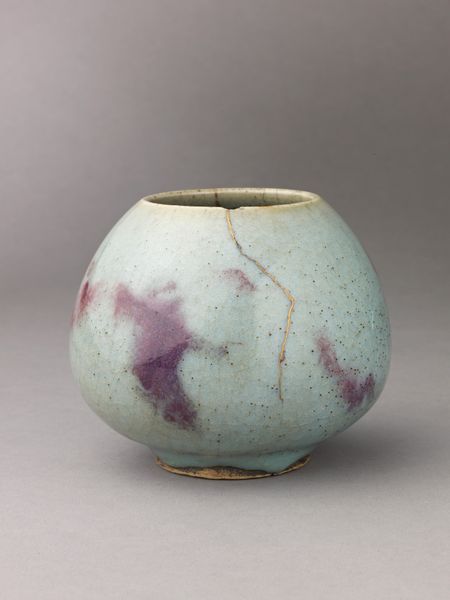
ceramic
#
asian-art
#
ceramic
Dimensions: Height: 4 15/16 in. (12.5cm.)
Copyright: Public Domain
Editor: Here we have a two-eared jar of Jun ware, which dates back to the late 12th or early 13th century. Looking at its form, I'm struck by its pleasing symmetry, but also its slightly muted colour palette. How would you interpret this piece? Curator: Its globular shape, resting firmly on a subtly flared foot, speaks to a self-contained unity. The twin handles, or ‘ears,’ punctuate the rounded surface, creating a play of positive and negative space. Editor: The glazing technique looks like an important element in understanding it. Curator: Precisely. The opalescent glaze, shifting from muted blues to lavender, invites a semiotic reading. Do the tonal gradations suggest a symbolic transition from the earthly to the celestial? Note how the thicker glaze pools and thins across the surface, revealing subtle variations in texture and colour intensity. These are not accidents, but integral parts of the compositional strategy. The piece achieves resolution as a complete unit. Editor: It’s almost like the glaze itself becomes the subject. I can see that tension between form and surface is deliberate, part of its identity. Curator: Precisely. And the rim—unglazed and subtly irregular—grounds the ethereal qualities of the glaze, offering a material counterpoint. What we observe, overall, is a sophisticated manipulation of formal elements: shape, texture, colour, and spatial relations. All culminate in its unique, autonomous presence. Editor: Seeing it broken down like this really illuminates how complex something that initially appeared very simple is. Curator: Indeed, a lesson for us both. The devil, as they say, is always in the details.
Comments
No comments
Be the first to comment and join the conversation on the ultimate creative platform.
